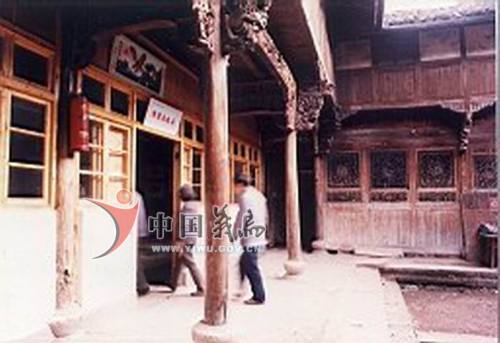| Home |
|
Red Tourism
Fenshuitang Village -- Chen Wangdao’s Former Residence
|
Chen Wangdao (1891-1977), whose former name was Canyi and pen names were Fo Tu and Xue Fan, was born in Yiwu, Zhejiang. He studied in Japan in his earlier years and graduated as a law bachelor from Japanese Central University. After he came back to China, he actively promoted the New Culture Movement and was engaged as the editor of the “New Youth”. His translation of the Communist Manifesto was the 1st complete Chinese version. He was a member of the founding team of the CPC Shanghai. In July 1921, he attended the 1st CPC State Congress and was elected as Secretary of the CPC Shanghai Committee. In 1927, he taught in the Fudan University. He was a member of the 4th Standing Committee of National People’s Congress and a member of the 3rd and 4th Standing Committee of CPPCC National Committee, and served as Vice President of the 3rd Central Committee of China Democratic League. In 1955, he was elected Commissioner of the Department of Philosophy and Social Science under the Chinese Academy of Sciences. He had been engaged in the progress Chinese language movement and the teaching study of Chinese language science for all his life. He established the scientific rhetoric system of China and had great knowledge of philosophy, ethics, literature theory and aesthetics. He was the editor-in-chief of the dictionary of “Ci Hai” and wrote the “Rhetoric” and “On the Grammar”. Chen Wangdao’s Former Residence was built in the Reign of Emperor Guangxu in the Qing Dynasty and is located in the Fenshuitang Village, Chengxi Community, Yiwu. The house covers an area of 416 square meters and has gardens in the front of the house and in the backyard. The firewood room inside the former residence is the place where Chen Wangdao translated the Communist Manefisto. On display is Chen Wangdao life stories in the former residence. In September 1984, it became the Yiwu city-level preservation unit of cultural relics. In September 2005, the hometown of Chen Wangdao was appraised as “Zhejiang’s Classic Red Tourism Scenic Spot for Youth” by the Zhejiang Committee of the Communist Youth League and the Zhejiang Tourism bureau. |

